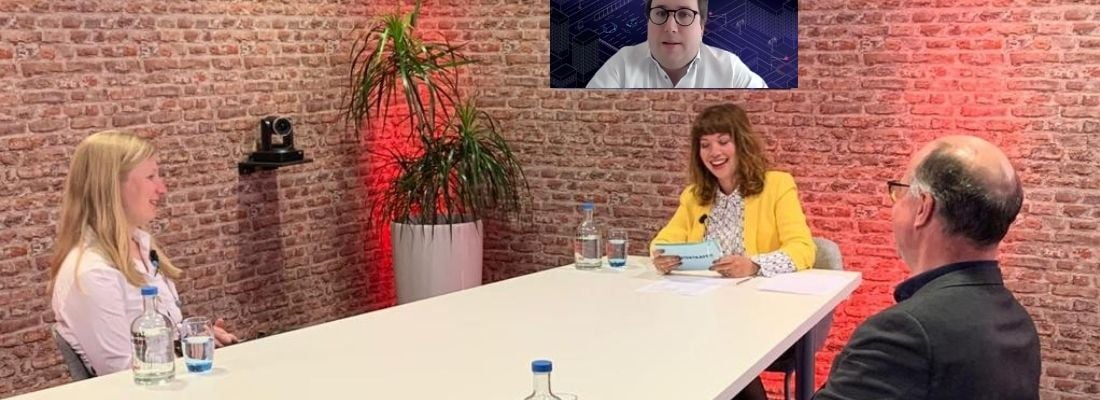Intertraffic ON AIR Episode 2: Smart traffic control
Smart Traffic Control took centre stage for episode 2 of Intertraffic ON AIR
Intertraffic’s new ON AIR series featuring leading industry stakeholders discussing the most relevant topics on the mobility transition went live to the world on Tuesday the 20th of April with a 90-minute exploration into the inner workings of Smart Traffic Control.High-accuracy data is essential for effective and safe traffic management. But in order to collect that data you need traffic detectors that perfectly match the requirements of the respective application. AI applications have been slowly emerging in the traffic industry. Advanced technologies such as machine vision, thermal imagining, Wi-Fi technology, analytics-driven video solutions and even drone technologies are used to detect traffic.
“Making concessions are necessary to make traffic data sharing work”.
Marlous Hovestad, Traffic Advisor at NDW (National Road Traffic Data Portal) and Technolution’s Director of Mobility Paul van Koningsbruggen joined host Marinda Hall in the purpose-built Intertraffic studio, with Steffen de Muynck, product manager at FLIR ITS joining from Belgium via Zoom, to discuss the latest smart traffic control innovations, continuing the conversation started in our recent article.
Watch and Connect | Intertraffic ON AIR
The live broadcast of our Intertraffic ON AIR episodes 1 & 2 on 20th of April has ended. However, you can watch the episode on our website. Or check out the full 2021 programme and episodes >
The informal, business talk show environment, with Hall facilitating the chat, enabled the participants to talk freely (and equally), interspersed with answering attendees’ notable and pithy questions. With an increase in data, said Hovestad, comes an increase in responsibility and an increase in the details that drivers and consumers of this data want to know. “What companies like FLIR ITS and Technolution are doing,” she explained, “is enabling NDW to provide those details.”
With the increase in journeys made on foot or by bike largely due to travel restrictions and teleworking amid the pandemic, Marlous pointed out that in the Netherlands at least, cyclists and pedestrians outnumber cars so that the notion of doing away with physical road signs, as was evinced in the first episode of ON AIR, was some way off, plus their provision is still a legal requirement.
Much has been made of the potential use of drones for smart traffic control purposes and there is a lot that needs to be explored in that regard, but Hovestad suggested that eCall was perhaps one area of traffic control where drones could come into their own. Drones, though, are just one part of the future as seen by the NDW Traffic Advisor.
“Drones could certainly provide an overview of an accident situation. Drone-mounted cameras could provide vital information in assisting the emergency services respond to an eCall, but as I see it road users will become more and more informed and it will be seamless and they won’t even notice.”
“Our ultimate ambition is to have a digital twin of what happens on the road, on what you can see you can act and start to optimize traffic.”
For Paul van Koningsbruggen, it’s all about meaningful, co-operative data.“The future is exciting from a technology perspective. The exciting part is that as a traveller I need to know my optimum route but we have to combine it with network optimisation and the passenger experience. Yes, the shortest, fastest route is desirable… but also the route that is the most environmentally friendly. The city-friendliest route.”
Van Koningsbruggen extolled the many and various virtues of the digital twin, a NASA-derived virtual representation that serves as the real-time digital counterpart of a physical object or process. “I see an increasing reliance on computational power and chipsets” he said, citing the digital twinning of road networks and cities as a shining example. “The future will solve a lot of our problems but at the same time,” he concluded, “it will create a lot of questions.”
“Deep learning is really the game changer here for it tends to make the product better, more reliable, more flexible to install and in general a better solution for our customers.”
FLIR ITS’s de Muynck agreed. “Converting data into information is the key to all this,” he said. “Moving from reactive data to predictive data is the real game-changer.”
To enable the traffic control industry to move seamlessly towards smartness de Muynck has his eye firmly fixed on one strand of innovation: deep learning. “Cities are moving away from traditional methods and modes of transport. Deep learning techniques are enabling them to do so by offering better solutions to their problems. City planners need high resolution data to facilitate the shift towards new modes of transport such as micromobility and deep learning gives them what they need. It also gives end-users and planners what they need – and that is not the same thing.”
De Muynck followed by praising advances in Artificial Intelligence. “AI has speeded up the transition. With it we able to bring the best generation of technological solutions to the customer. It gives all parties flexibility and the optimum customer experience with every available AI component built into the product.”
Next Intertraffic ON AIR series
22 June: Parking as a Service and Improving road safety
September: Accelerating sustainable mobility and Connected Automated Driving
December: Smart dynamic traffic management and Next generation mobility
Share your story
Do you have an innovation, research results or an other interesting topic you would like to share with the professionals in the infrastructure, traffic management, safety, smart mobility and parking industry? The Intertraffic website and social media channels are a great platform to showcase your stories!
Please contact our Sr Brand Marketing Manager Carola Jansen-Young.
Are you an Intertraffic exhibitor?
Make sure you add your latest press releases to your Company Profile in the Exhibitor Portal for free exposure.
Get up to speed on the mobility industry - our newsletter straight to your inbox!








